Where do the clouds go? RightScale Study Overview
This study provides insights into the cloud market from customers and users. Their answers provide a comprehensive look at the state of the market.
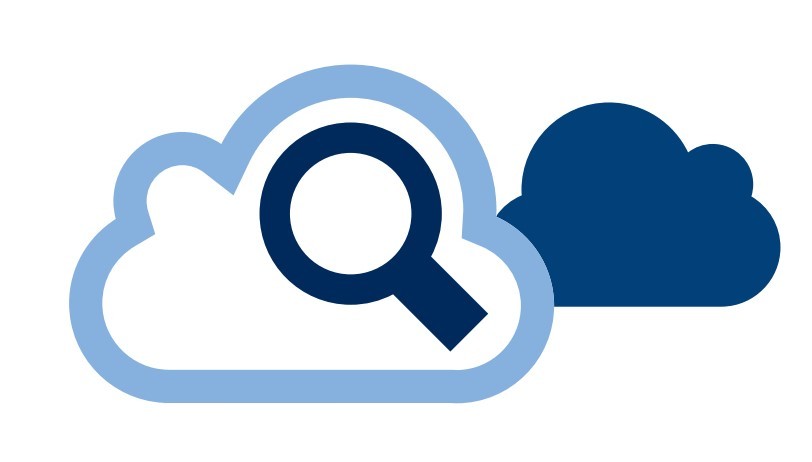
As we said above, we interviewed more than 1,000 technical experts about their experience in using the cloud:
Respondents by company size:
- 48% - work in companies with a staff of> 1000 people;
- 21% - in companies with a staff of 101-1000;
- 31% - in companies, the number <100;
Industry respondents:
- 27% are engaged in maintenance;
- 22% - production and supply of software;
- 9% - financial services;
- 6% - telecom;
- and others: medicine, education, media;
The main conclusions that we received:
The share of private cloud falls
Over the past 12 months, we have seen a decline in the use of private cloud solutions. The percentage of respondents using private clouds in their work fell from 77% to 72%. As a result, the use of hybrid solutions also declined, from 71% last year, to 67%.
')
In total, more than 95% of respondents use one of the three types of cloud in their work.
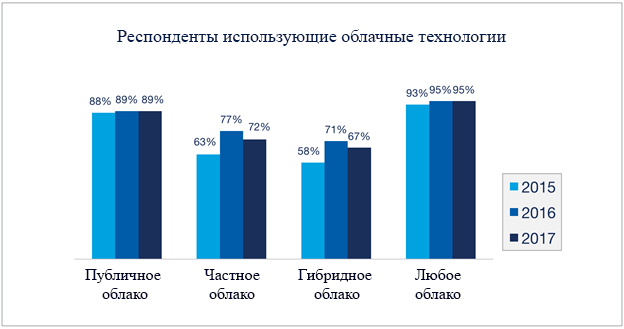
Multiple Cloud becomes more popular
The percentage of enterprises using multi-cloud (multiple Cloud) reached 85% (against 82% last year), the average number of cloud service providers in companies using multiple Cloud is 1.8. 

Most of the loads went to the clouds
More than 79% of workflows are now sent to the cloud, with 41% in a public cloud and 38% in private cloud systems.
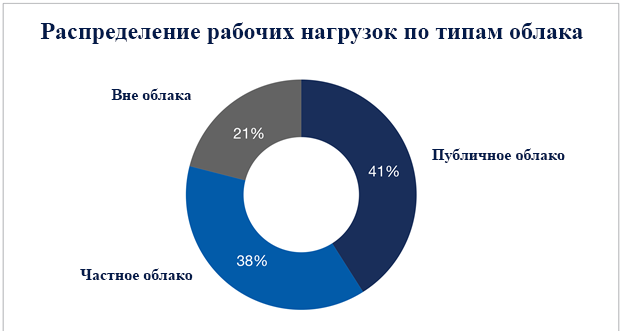
Resources are wasted
By 2017, the main experiences and discontent in the use of cloud technologies have converged on their "costs". The wasted resources of the respondents' answers reach up to 30% in their total, RightScale estimates that this figure often reaches 45%, and users have yet to learn how to correctly determine the required capacity.
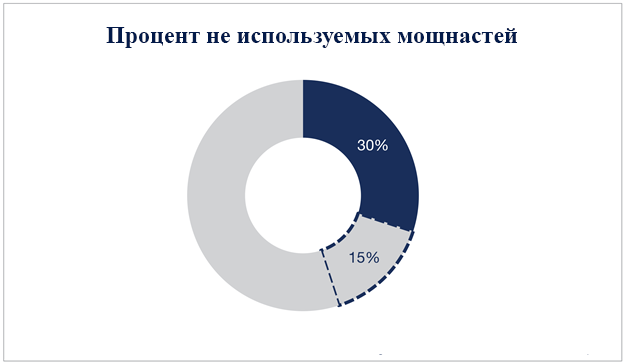
The main areas of work with the cloud in 2017
Increased concern about rising costs can be traced here, with 53% going to optimize and reduce costs.

DevOps Spread
As a result of the widespread use of DevOps benefits in development, companies began using various tools to standardize and automate the deployment of servers and applications. These tools include configuration management tools (such as Chef, Puppet and Ansible) and, more importantly, the latest container virtualization tools (Docker, Keberneets, and others)
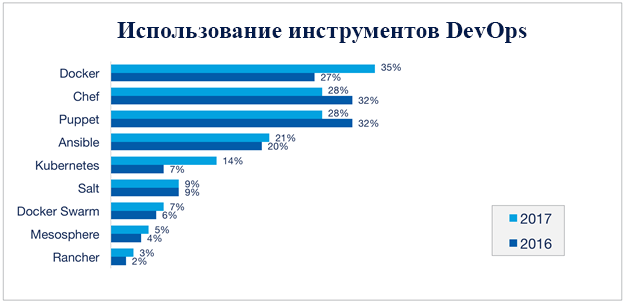
Summary
The 2017 survey showed that, while hybrid cloud remains the preferred option when using cloud technologies, the share of public cloud is growing, due to the fact that fewer and fewer companies use a private cloud.
With the growing maturity of users and cloud providers, we are seeing a tendency to reduce fears of facing various problems when using the cloud. Unlike last year, when 32% of respondents expressed concerns about the lack of experience and resources, in 2017, users began to worry about other problems: safety and costs.
As the use of the cloud grows, so do the accounts. As a result, this has become a major problem that concerns the users. Most organizations, however, still fail to estimate the level of unused resources and call the figures at 30%, although according to our data this percentage is much higher and reaches 45%. Only a small number of users took steps to reduce the level of wasted resources in the past year.
In 2017, this should be the most popular cloud business.
Source: https://habr.com/ru/post/323400/
All Articles